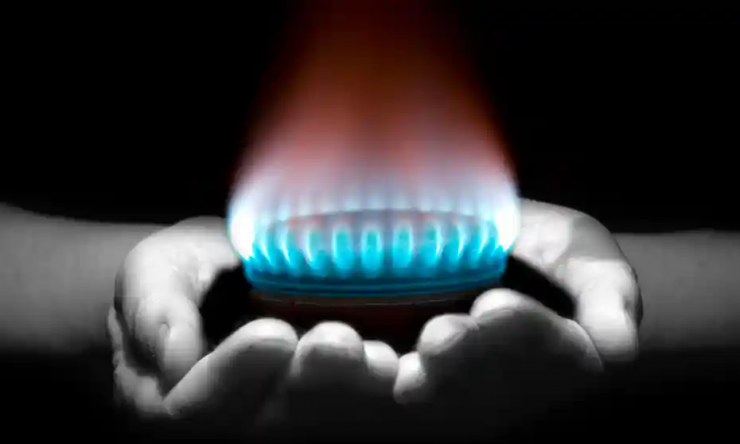Inside the race to use hydrogen to heat homes in the UK – Wired.
[Wired] A village in north-eastern England is now at the forefront of the hydrogen revolution. But is this really the future of heating?One evening in September, Elizabeth Thompson, 53, was enjoying a quiet evening at home with her husband. She’d just returned home from Gateshead, a short drive away, where she looks after elderly residents in sheltered flats, and she popped a pie in the oven for dinner.
To her surprise, not only did it cook more quickly than usual, but the inner envelope of the flame on the gas stove was a bright orange rather than the usual blue. She smiled because she knew the hydrogen she’d been expecting had finally arrived.
🔥 What about we co-host a webinar? Let's educate, captivate, and convert the hydrogen economy!
Hydrogen Central is the global go-to online magazine for the hydrogen economy, we can help you host impactful webinars that become a global reference on your topic and are an evergreen source of leads. Click here to request more details
Thompson resides in Winlaton, a small village in north-eastern England that is now at the forefront of a controversial new energy transition: beginning in August, the heating and cooking appliances in its 668 residential properties, school, and small businesses have been fueled partially by hydrogen. While some hope that hydrogen is the future of low-carbon heating, others argue that it should only ever be a stopgap in the frantic race to decarbonise the UK.
It’s the first time that hydrogen, which emits mostly water when burned for energy, has been supplied through the UK gas grid since the ‘60s, when town gas – a composite made from burning coal that contained up to 60 per cent hydrogen – powered Britain. Importantly, it has required no changes to the existing pipes, boilers, and burners: there’s growing evidence that a blend of up to 20 per cent hydrogen with 80 per cent natural gas is compatible with existing infrastructure.
Higher concentrations would require not only significant network and infrastructural upgrades, but also hydrogen-specific appliances and boilers.
The project called HyDeploy is being run by Northern Gas Networks and Cadent and is driven by a frankly desperate need to slash emissions from one of the most polluting parts of the economy: heating our homes.
Around 85 per cent of homes in the UK rely on boilers that burn natural gas, a flammable hydrocarbon comprising mostly methane that gives off carbon dioxide when it burns. The average home’s daily gas use is equivalent to driving 19 miles in a petrol-fuelled car.
Solving this heating problem is a major headache. Almost half of the energy consumed in the UK is used for heat, and around 57 per cent of this is heating our homes and hot water. This is more than 10 times the amount of carbon dioxide created by the aviation industry. If the government is to have hope of hitting its target of net zero carbon emissions by 2050, we need to find alternative means of keeping homes warm.
Hydrogen is now playing a starring role in this conversation. The attraction is that it could in theory be transported to our homes by repurposing the same underground network of pipes that have been delivering natural gas to millions of homes across the country for generations, minimising disruption for customers.
Robert Sansom, a member of the Institution of Energy and Technology’s Energy Policy Panel.
We would all continue to use a boiler, albeit one partly powered by hydrogen, to heat our homes in a similar manner to natural gas and probably notice little difference.
If HyDeploy can prove, as it’s expected to do, that a blend can safely be utilised in the existing gas network, the same setup could be rolled out across the UK with reasonable ease to reduce carbon emissions and drive a market for hydrogen.
But the catch is this: because hydrogen has a lower energy density per meter cubed of gas than methane, this would give us a maximum reduction in emissions from the grid of seven per cent — a drop in the ocean.
This goes to say that blending can only really ever be an interim measure until we find a more effective solution. While this is nothing to sniff at, it leaves us with the same existential question: what is going to take us the rest of the way? While to many people pure hydrogen may feel like the logical answer, there’s a chasm between the rhetoric and the reality, which raises another important question: how much should we be bothering with it at all?
The UK’s interest in using hydrogen to heat our homes dates back to around 2016, when a report by north of England’s gas distributor, Northern Gas Networks, confirmed that the conversion of the UK gas network to pure hydrogen was technically possible and economically viable.
The report considered the UK’s conversion from town gas to natural gas, which took place in the 1960s and ‘70s, and since then hydrogen has been touted as the easiest, most convenient solution for the future of heating. It’s easier to change the fuel than the system.
That may be true, but there’s also a danger that viewing hydrogen as a decarbonisation panacea perpetuates our reliance on fossil fuels and distracts us from more effective solutions like heat pumps.
Richard Lowes, a researcher in heat decarbonisation at the University of Exeter.
To the uninitiated, hydrogen looks like a really simple idea.
“But the more you drill into it the more expensive and complicated it becomes, and I think people are finally realising it doesn’t look good.”
The fundamental challenge with hydrogen is producing it in the scale we require. On Earth it’s found as part of another compound, such as water or methane, and the separation process is fundamentally inefficient and wastes lots of valuable energy.
The most common and economical way to produce hydrogen is to blast fossil fuels with high-temperature steam in a process known as reforming. When said fuel is natural gas and the carbon dioxide that would ordinarily be released is captured and stored in depleted oil wells through a process known as carbon capture, this is called blue hydrogen, but it’s still expensive and far from a zero-emission technology.
Producing enough blue hydrogen to decarbonise the UK’s heating system would require significant scaling up of infrastructure.
According to a report by Cornell and Stanford University researchers in the United States, blue hydrogen may actually be up to 20 per cent worse for the climate than natural gas because the waste stream of methane, which has a global warming potential that’s 28-36 times greater than carbon dioxide, is larger than when the natural gas is simply extracted and burned.
This is primarily because more methane needs to be extracted to make blue hydrogen: only between 70 and 75 per cent of the natural gas’ potential remains in the hydrogen product, so you need around 30 per cent more natural gas to make blue hydrogen than if it was used directly for heat. The study also says there are more chances for the methane to leak because the process is complex.
There’s been some discussion around the validity of this study, says Sansom, a member of the Institute of Energy and Technology’s Energy Policy Panel. He says that gas leakage rates are much lower than assumed and the performance of modern gas reforming plants with carbon capture significantly better.
With this in mind, he proposes that we could use blue hydrogen as a stop-gap while we develop more renewable and scalable means of producing or sourcing hydrogen like biomass gasification – the process of converting organic materials like animal waste into carbon monoxide, hydrogen, and carbon dioxide at high temperatures without combustion – or importing from solar PV installations in the Middle East and Australia.
It is also possible to produce hydrogen through electrolysis, a process that splits water into its basic elements – hydrogen and oxygen – by electric charge. If the electricity comes from renewable sources then the hydrogen is in effect zero carbon, but because electrolysers are only between 60 and 80 per cent efficient it requires a huge amount of electricity, which at this moment is expensive and frankly unavailable in such large quantities.
This approach is called green hydrogen, but “you end up with a unit price that’s double or triple the current price of gas,” Lowes says.
There is, of course, the argument that the price of green hydrogen will plummet with the cost of renewable electricity, but then you have to ask: where is that green energy best directed?
For Lowes, the answer is heat pumps, a reasonably new technology in the UK that extracts heat from either the air or the ground and transfers it to radiators for central heating. The devices also run on electricity, but they’re highly efficient.
According to the LETI study, green hydrogen for heating has an energy efficiency of 46 per cent: for every 100kWh of renewable energy used to produce green hydrogen, only 46kWh of building heat is produced because of energy losses in production, storage, and transportation of the gas.
Heat pumps, in contrast, produce an energy efficiency of 270 per cent because they extract heat from the environment rather than making it themselves. The government has said it wants 600,000 electric heat pumps to be installed in UK homes each year by 2028, and recently it has offered to subsidise them.
“With hydrogen there is a large capital investment but it’s all outside of the household, in building the infrastructure to produce the gas and upgrading the piping,” Lowes says. “To avoid low upfront costs you’re locking in high bills forever.”
The main obstacle is that heat pumps will underperform without energy efficiency improvements to the UK’s housing stock, because they operate at a lower temperature, and street circuit networks will probably need to be upgraded to handle the new demand for electricity.
They also require a significant upfront investment from the consumer, despite the government subsidy, which makes it hard to envisage widespread adoption.
“If a building can use a heat pump they should use a heat pump,” Sansom says. “But I would argue that they’re completely unsuitable for about 50 per cent of UK buildings.” Even if we can sustainably produce enough hydrogen, there are some other practical problems with safely delivering pure hydrogen gas into the appliances in our homes. The gas has different properties to methane so it’s unclear how it behaves in the pipes.
For instance, hydrogen is supposedly more likely to leak because the molecules are smaller than methane – though the trials have provided no evidence to support this. Because it’s more flammable too, a safety assessment found that hydrogen boilers are more likely to explode but reports suggest that the threat can be mitigated by adding extra flow valves in boilers.
Hydrogen doesn’t include carbon so it does eliminate the possibility of carbon monoxide poisoning.
Then there’s the problem of embrittlement, a phenomenon caused by hydrogen atoms diffusing into the micro-structure of a metal, resulting in sudden fracture. Not all pipes in this broader network are equally suited for transporting hydrogen, because they’re different ages and made of different materials.
Since 2002, the gas network distributors have been switching their “at risk” iron gas pipes – those within 30 metres of domestic buildings – with yellow polyethylene ones, which are safer for two reasons: they leak less, because the jointing technology is more secure; and hydrogen doesn’t react to them. It’s anticipated that the job will be 90 per cent complete by 2030.
Current research has shown that polyethylene is “perfectly safe” to transport one hundred per cent hydrogen, says Adam Madgett of Northern Gas Networks, although the pipes might need to be adjusted because you need to push through approximately three times as much hydrogen to supply the same amount of energy.
The pressing questions surround the iron pipes that remain in the distribution network and the steel pipes that transport the gas between distributors under extremely high pressure – like motorways, known as the national transmission network. Tests suggest that lacing the hydrogen with oxygen might be effective.
Danielle Stewart, the National Grid’s hydrogen programme manager, says.
We believe we can repurpose our assets and ensure the energy transition is affordable.
According to the LETI report, the most insurmountable challenge of using hydrogen lies in the small in-house pipes, often concealed inside walls and under floors, that would need to be upgraded to handle smaller hydrogen molecules. To change them would require the permission from property owners across the country.
So, when it comes to cutting carbon emissions from our homes, where does hydrogen belong?
The truth is that all options for us to decarbonise our heating systems require significant disruption and cost, and there is no one-size-fits-all solution.
What we do know is that hydrogen, for all the excitement that has been surrounding it, is just one piece of a much bigger jigsaw – and that piece will realistically remain small until the UK can supply reliable carbon capture infrastructure and affordable and abundant green hydrogen.
It may be that hydrogen only replaces fossil fuels in areas less suited to electrification, but it’s impossible to rule out a larger, more significant role until we’ve trialled both technologies at scale.
Adam Madgett
We are going to a mix of solutions and the reason for that is we have a mix of homes, with different ages, and a mix of consumers with different needs and wants
“It’s a big puzzle with lots of dimensions and we need to ensure we’re investigating all of them.”
READ the latest news shaping the hydrogen market at Hydrogen Central
Check out the article from Wire in the link below. Thanks for staying up to date with Hydrogen Central.
Inside the race to use hydrogen to heat our homes, October 26, 2021








